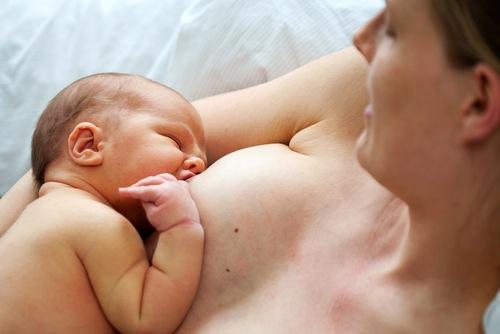
By Sandy Hemphill, Contributing Writer
It may never be known what impact a highly publicized photo of ten female soldiers in camo fatigues breastfeeding their babies on an Army base had on decision making or timing, but on September 29, the US Army became the final military branch to implement a breastfeeding policy for new mothers in the Army.
The Butterfly Room
Perhaps the commanders of Fort Bliss in El Paso, Texas, were ahead of their time when they designated a special room — the Butterfly Room — on the base for breastfeeding or milk pumping only. The photo of the ten mothers nursing in uniform that went viral across the internet was taken to decorate the wall of this room. The soldiers volunteered for the photo, which was taken after the day’s military duties were completed.
The photo, taken on September 10, was shared thousands of times on Facebook alone on the first day it was posted and generated an avalanche of conversation both online in social media circles and by more traditional means as well. Perhaps the undeniable public interest in the subject sealed the deal that a US Congresswoman proposed back in July.
Proposed Congressional Amendment
Representative Niki Tsongas (D-Mass) authored an amendment to the National Defense Authorization Act that would require the Army to develop and implement a policy that would provide a sanitary private area specially designated for breastfeeding or pumping, complete with electrical outlets and clean running water. The amendment also included the provision that women be allowed to take breaks of whatever frequency and duration was necessary for this purpose. All other US military branches have breastfeeding policies in place.
Reviewing the Matter
Until the Fort Bliss breastfeeding photo brought the matter to public attention, the only official response Tsongas got was a letter informing her the Army was reviewing the matter. The letter came from General Ray Odierno, who was then the Army’s Chief of Staff.
Mission Accomplished
On September 29, John M. McHugh, the current US Secretary of the Army, issued a memorandum to US Army commanders around the world that described a new seven-point directive describing the Army’s new Breastfeeding and Lactation Support Policy:
- Point 1 — The new directive references two earlier regulations from 2014 and 2015.
- Point 2 — Requires soldiers wishing to breastfeed once they’ve returned to duty to notify their commanding officers to devise a support plan.
- Point 3 — Requires a private, specially designated breastfeeding area that can be locked, has an electrical outlet, and a safe water source. If this area is part of a bathroom facility, it cannot be a bathroom stall.
- Point 4 — Acknowledges breastfeeding and lactation needs vary from woman to woman and age of the baby. All military facilities are to have a lactation specialist available and soldiers are to work with their commanders to balance lactation support and military readiness.
- Point 5 — Each soldier must supply her own lactation supplies and is not exempt from field training or mobility exercises. When on such maneuvers, a private space must be the designation for lactation purposes.
- Point 6 — The directive is effective immediately and applies to soldiers on active duty as well as those in Army National Guard and Reserve units.
- Point 7 — The directive stands as written until it can be incorporated into a revised version of Army regulations and will remain in effect until it becomes officially rescinded.
Some mothers in the Army report being told their commanding officers thought women only need to pump once a day. The US Air Force is the only branch that offers a specific breastfeeding break policy: 15 to 30 minutes every three to four hours. All other military branches match the Army’s as-needed break policy.
Sources:
- "Army releases servicewide breastfeeding policy." ArmyTimes. TEGNA, 30 Sept. 2015. Web. 8 Oct. 2015.
- "Breast-feeding and pumping: 7 tips for success." Mayo Clinic / Infant and Toddler Health. Mayo Foundation for Medical Education and Research, 8 Apr. 2015. Web. 8 Oct. 2015.
